
- Shandong Loyal Industrial Co.,Ltd.
- SHORT-CUT PASTA PRODUCTION LINE LONG-CUT PASTA PRODUCTION LINE INSTANT PASTA PRODUCTION LINE
Home> Company News> The Global Guide to Combined Automatic Pasta Sheeters in 2024

The Global Guide to Combined Automatic Pasta Sheeters in 2024
2024-03-27 18:03:43Introduction
In the realm of modern pasta manufacturing, the integration of combined automatic pasta sheeters has revolutionized the industry. These advanced machines play a pivotal role in streamlining the production process and enhancing efficiency. This article aims to explore the definition and significance of combined automatic pasta sheeters in today's pasta manufacturing landscape.
Definition of Combined Automatic Pasta Sheeters
A combined automatic pasta sheeter is a specialized piece of equipment used in the pasta manufacturing industry to streamline the process of sheeting and shaping pasta dough. Unlike traditional pasta sheeters, which may require manual intervention at various stages, combined automatic pasta sheeters integrate multiple functions into a single machine, automating the sheeting process from start to finish.
These machines are equipped with advanced technology and features such as automated feeding systems, precision rollers, and cutting mechanisms, allowing for efficient and consistent production of pasta sheets. The term "combined" refers to the integration of multiple functions, such as sheeting, cutting, and shaping, into a single machine, making it a versatile and indispensable tool in modern pasta manufacturing facilities.

Significance in Modern Pasta Manufacturing
The significance of combined automatic pasta sheeters in modern pasta manufacturing cannot be overstated. These machines play a crucial role in improving efficiency, consistency, and productivity in pasta production facilities. By automating the sheeting process, combined automatic pasta sheeters reduce the need for manual labor, resulting in faster production times and higher output volumes.
Furthermore, the precision and accuracy of combined automatic pasta sheeters ensure uniformity in the thickness and shape of pasta sheets, leading to consistent product quality. This is particularly important in the production of short-cut and long-cut pasta varieties, where uniformity is essential for optimal cooking results and consumer satisfaction.
Combined automatic pasta sheeters represent a significant advancement in pasta manufacturing technology, offering manufacturers the ability to streamline production processes, improve product quality, and meet the demands of modern consumers.

Current Market Trends and Demand
In today's rapidly evolving pasta manufacturing landscape, the demand for efficient and scalable solutions has driven the widespread adoption of combined automatic pasta sheeters. These state-of-the-art machines have revolutionized the industry by automating the sheeting and shaping of pasta dough, thereby improving production efficiency and consistency.
One significant trend in the market is the increasing preference for short-cut pasta production lines. These production lines specialize in the manufacturing of pasta varieties such as penne, rigatoni, and fusilli, which are popular choices among consumers worldwide. The versatility of combined automatic pasta sheeters enables manufacturers to seamlessly integrate these short-cut pasta production lines into their operations, meeting the growing demand for these pasta varieties.
Another notable trend is the rising popularity of long-cut pasta production lines. These production lines are designed to produce pasta shapes such as spaghetti, fettuccine, and linguine, which have long been staples in many cuisines. With the advanced capabilities of combined automatic pasta sheeters, manufacturers can efficiently produce long-cut pasta varieties while ensuring uniformity and quality, thus meeting the evolving preferences of consumers.
Furthermore, the demand for combined automatic pasta sheeters is not limited to large-scale pasta manufacturers but also extends to small and medium-sized enterprises seeking to enhance their production capabilities. As these machines become more accessible and affordable, smaller players in the market are increasingly investing in them to remain competitive and meet the growing demand for pasta products.
Growth Opportunities Across Regions
The demand for pasta products is not limited to specific geographical regions but is rather a global phenomenon. As such, there are significant growth opportunities for combined automatic pasta sheeters across various regions worldwide. In regions with established pasta consumption habits, such as Europe and North America, the demand for high-quality pasta continues to rise, driving the adoption of advanced pasta manufacturing equipment.
In emerging markets, such as Asia-Pacific and Latin America, the increasing urbanization and changing dietary preferences are contributing to the growth of the pasta market. As more consumers seek convenient and ready-to-cook pasta products, manufacturers in these regions are investing in modernizing their production facilities, including the adoption of combined automatic pasta sheeters.
Furthermore, advancements in technology and the availability of affordable manufacturing solutions are opening up new avenues for pasta production in previously underserved regions. This includes areas with limited access to traditional pasta manufacturing equipment, where combined automatic pasta sheeters offer a cost-effective and efficient alternative for producing high-quality pasta products.
The market trends indicate a growing demand for pasta products globally, driving the adoption of combined automatic pasta sheeters across regions. With their versatility, efficiency, and scalability, these machines are poised to play a pivotal role in meeting the evolving needs of the pasta industry and capitalizing on the opportunities for growth in various markets.

Advanced Functionalities and Capabilities
Combined automatic pasta sheeters are renowned for their advanced functionalities and capabilities in modern pasta production. These machines integrate cutting-edge technology to streamline the pasta-making process, ensuring efficiency and consistency in output.
One of the key functionalities of combined automatic pasta sheeters is their ability to handle a wide range of pasta types, including both short-cut and long-cut varieties. Whether producing penne, fusilli, spaghetti, or fettuccine, these machines can adjust their settings accordingly to meet the specific requirements of each pasta type.
Additionally, combined automatic pasta sheeters offer remarkable versatility in pasta thickness and shape. Operators can easily adjust the settings to produce pasta sheets of varying thickness levels, from thin angel hair to thicker lasagna sheets. Moreover, these machines can produce pasta in different shapes and sizes, allowing for creativity and customization in pasta production.
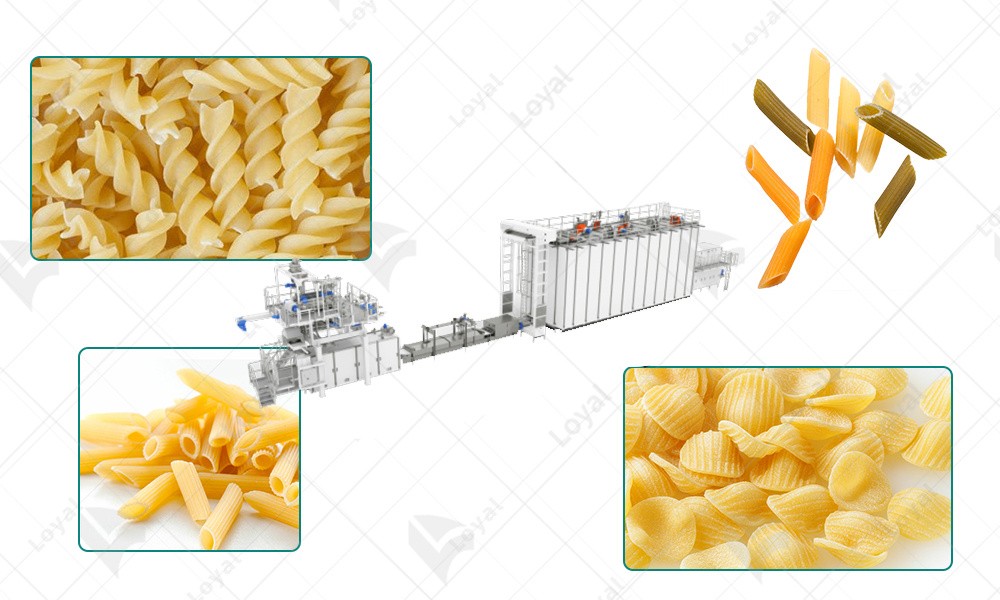
Innovative Technologies Driving Efficiency
Innovative technologies play a crucial role in driving efficiency in combined automatic pasta sheeters. These machines incorporate state-of-the-art features and systems that optimize performance and maximize productivity.
One such innovation is the integration of computerized control systems in combined automatic pasta sheeters. These systems allow for precise monitoring and adjustment of various parameters, such as dough consistency, sheet thickness, and cutting speed. By leveraging real-time data and feedback, operators can fine-tune the machine settings to achieve optimal results consistently.
Another innovative technology found in modern pasta production lines is the use of advanced materials and components. High-quality stainless steel construction ensures durability and longevity, while non-stick surfaces and coatings prevent dough from sticking and facilitate easy cleaning and maintenance.
Furthermore, some combined automatic pasta sheeters utilize energy-efficient motors and drive systems, reducing power consumption and operating costs. These eco-friendly features not only contribute to sustainability but also enhance the overall cost-effectiveness of pasta production operations.
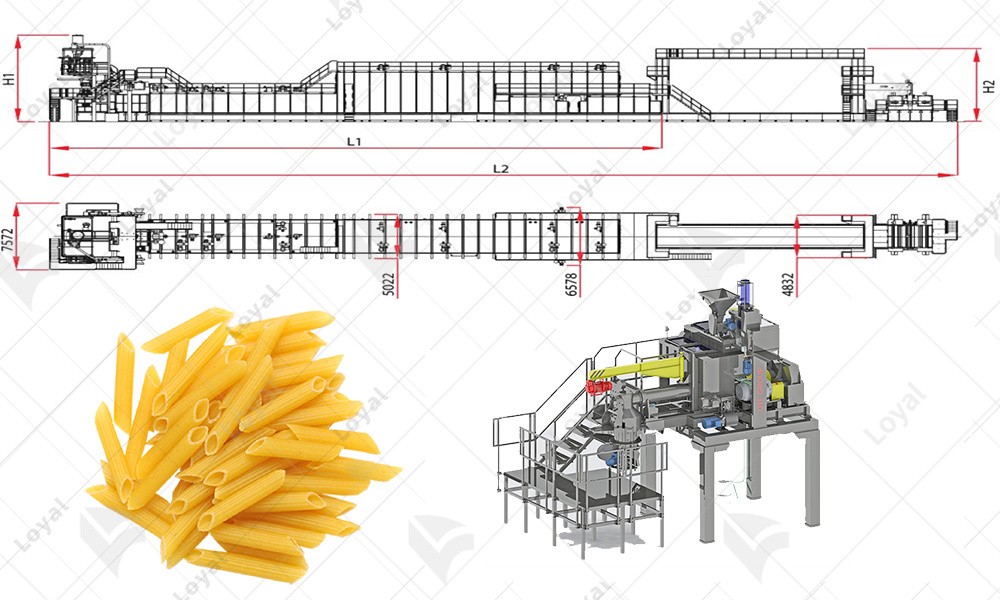
Profiles of Leading Manufacturers
Shandong Loyal Industrial Co., Ltd. is a prominent player in the pasta manufacturing industry, renowned for its innovative solutions and high-quality equipment. With a focus on precision engineering and cutting-edge technology, The company has established itself as a leader in the field of combined automatic pasta sheeters.
Short-cut pasta production lines are another area of expertise for Shandong Loyal Industrial Co., Ltd. These production lines are tailored to produce pasta shapes such as penne, fusilli, and macaroni, catering to diverse consumer preferences.
In addition to short-cut pasta production lines, The company also specializes in long-cut pasta production lines. These lines are designed to produce traditional pasta shapes such as spaghetti, linguine, and fettuccine, with a focus on maintaining the authentic texture and flavor of the pasta.

Environmental Impact Considerations
Environmental sustainability has become a paramount concern in modern manufacturing, including the production of pasta. When assessing the environmental impact of pasta production, several key factors come into play, particularly in the context of combined automatic pasta sheeters, short-cut pasta production lines, and long-cut pasta production lines.
One of the primary environmental considerations in pasta production is energy consumption. Combined automatic pasta sheeters, although efficient, may still consume significant amounts of energy during operation. Similarly, both short-cut and long-cut pasta production lines require energy-intensive processes such as mixing, extrusion, and drying. Implementing energy-efficient technologies and optimizing production processes can help reduce overall energy consumption and minimize environmental impact.
Water usage is another critical aspect of environmental sustainability in pasta manufacturing. Both short-cut and long-cut pasta production lines require substantial amounts of water for dough preparation, pasta shaping, and cleaning processes. To mitigate the environmental impact, manufacturers can implement water recycling and reuse systems, as well as invest in water-saving technologies to minimize water wastage throughout the production process.
Pasta production generates various types of waste, including food waste, packaging waste, and wastewater. Combined automatic pasta sheeters, short-cut, and long-cut pasta production lines may produce waste materials such as offcuts, defective products, and packaging materials. Implementing waste reduction strategies, such as optimizing production efficiency, recycling packaging materials, and repurposing by-products, can help minimize waste generation and reduce the environmental footprint of pasta manufacturing.
The adoption of sustainable practices in ingredient sourcing is essential for reducing the environmental impact of pasta production. This includes sourcing high-quality raw materials, such as durum wheat for pasta dough, from sustainable agricultural practices. Additionally, using organic or locally sourced ingredients can reduce transportation emissions and support local economies. By prioritizing sustainable sourcing practices, pasta manufacturers can minimize their environmental footprint and contribute to broader sustainability goals.
Overview of Product Range and Market Presence
Shandong Loyal Industrial Co., Ltd. offers a comprehensive range of pasta manufacturing equipment, including combined automatic pasta sheeters, short-cut pasta production lines, and long-cut pasta production lines. These products are designed to meet the needs of pasta manufacturers of all sizes, from small-scale operations to large-scale industrial facilities.
With a strong presence in both domestic and international markets, Shandong Loyal Industrial Co., Ltd. has established itself as a trusted provider of pasta manufacturing solutions. The company's products are renowned for their reliability, performance, and efficiency, making them a preferred choice among pasta manufacturers worldwide.
In summary, The company is a leading manufacturer in the pasta industry, offering a diverse range of high-quality equipment to meet the evolving needs of the market. With a focus on innovation and customer satisfaction, the company continues to drive growth and success in the global pasta manufacturing sector.
http://www.pasta-productionline.com/uploaded_images/20768.jpg
Versatility in Food Production Applications
Combined automatic pasta sheeters offer unparalleled versatility in food production applications. These advanced machines are designed to efficiently produce a wide range of pasta varieties, including short-cut and long-cut pastas, with precision and consistency. By incorporating innovative technology and automation, combined automatic pasta sheeters streamline the pasta manufacturing process, allowing for increased productivity and flexibility in meeting diverse consumer demands.
A short-cut pasta production line exemplifies versatility in food production applications. With the capability to produce a myriad of pasta shapes such as penne, fusilli, and farfalle, these production lines cater to a wide range of culinary preferences. Whether it's for traditional Italian dishes or international cuisines, short-cut pasta production lines ensure efficiency and quality, making them indispensable assets in modern food manufacturing facilities.
Similarly, a long-cut pasta production line showcases versatility in food production applications by specializing in the production of elongated pasta shapes such as spaghetti, linguine, and fettuccine. These production lines are equipped with state-of-the-art machinery and equipment to precisely roll and cut the pasta dough into uniform strands. With their ability to produce a staple ingredient in countless pasta dishes worldwide, long-cut pasta production lines play a crucial role in meeting the diverse needs of consumers globally.
Key Considerations for Purchasing Decisions
When investing in a combined automatic pasta sheeter, there are several key considerations to keep in mind to ensure that you select the right machine for your needs. Here, we delve into the factors that should guide your purchasing decision:
1. Production Capacity: Determine the production capacity you require for your operation. Evaluate the throughput of the machine and ensure it aligns with your production goals. A combined automatic pasta sheeter should be able to meet your demand without causing bottlenecks in your production line.
Quality and Durability: Look for a machine that is built to last. Consider the materials used in its construction and the reputation of the manufacturer. Investing in a high-quality combined automatic pasta sheeter will ensure reliability and longevity, minimizing downtime and maintenance costs.
Versatility and Flexibility: Assess the machine's ability to handle a variety of pasta types and shapes. A versatile combined automatic pasta sheeter should be able to produce both short-cut and long-cut pasta, offering flexibility to adapt to changing market demands.
Ease of Operation and Maintenance: Opt for a machine that is user-friendly and easy to maintain. Look for features such as intuitive controls, quick changeover mechanisms, and accessibility for cleaning and servicing. A combined automatic pasta sheeter that is easy to operate and maintain will enhance efficiency and productivity in your facility.
Customization Options: Consider whether the machine can be customized to suit your specific requirements. Look for options to adjust parameters such as pasta thickness, cutting width, and speed to optimize production. A combined automatic pasta sheeter with customizable settings will enable you to tailor your pasta products to meet consumer preferences.

Comparison of Models and Customization Options
When comparing different models of combined automatic pasta sheeters, it's essential to evaluate their features and customization options to determine which best suits your needs. Here's a breakdown of what to look for:
Technical Specifications: Compare the technical specifications of each machine, including dimensions, power requirements, and production capacity. Ensure that the machine meets your space limitations and power supply capabilities.
Automation Features: Assess the level of automation offered by each machine, such as programmable settings, touchscreen interfaces, and automatic adjustment capabilities. Choose a combined automatic pasta sheeter that offers the level of automation that aligns with your production requirements and operational preferences.
Customization Capabilities: Consider the extent to which each machine can be customized to accommodate different pasta shapes, sizes, and recipes. Look for options to adjust parameters such as dough consistency, sheet thickness, and cutting width to achieve the desired results.
Quality and Reliability: Research the reputation of the manufacturers and their track record of producing reliable and high-quality pasta sheeters. Read customer reviews and testimonials to gauge user satisfaction and reliability.
After-Sales Support: Evaluate the level of after-sales support offered by the manufacturer, including warranty coverage, technical assistance, and availability of replacement parts. Choose a combined automatic pasta sheeter from a manufacturer known for providing excellent customer service and support.
Maintenance Requirements for Optimal Performance
To ensure the optimal performance of a combined automatic pasta sheeter, it's essential to adhere to regular maintenance routines. These routines are crucial for preserving the machine's efficiency, prolonging its lifespan, and minimizing downtime.
Regular cleaning is a fundamental aspect of maintenance for a combined automatic pasta sheeter. Dust, flour residue, and other debris can accumulate on the machine's surfaces and components, leading to decreased performance and potential mechanical issues. Therefore, operators should regularly clean the machine using approved cleaning agents and methods recommended by the manufacturer.
In addition to cleaning, lubrication is another critical maintenance task for a combined automatic pasta sheeter. Proper lubrication of moving parts helps reduce friction, prevent wear and tear, and ensure smooth operation. It's important to use the appropriate lubricants specified by the manufacturer and adhere to recommended lubrication schedules to maintain optimal performance.
Furthermore, routine inspection and troubleshooting are essential for identifying any potential issues or abnormalities before they escalate into more significant problems. Operators should regularly inspect the machine's components, such as belts, gears, and rollers, for signs of wear, damage, or misalignment. Any issues should be promptly addressed to prevent further damage and maintain the machine's performance.
 Availability of Technical Support and Training Programs
Availability of Technical Support and Training Programs
In addition to regular maintenance, access to technical support and training programs is crucial for ensuring the optimal performance of a combined automatic pasta sheeter. Technical support provides assistance and guidance in troubleshooting issues, resolving technical problems, and optimizing machine performance.
Many manufacturers of combined automatic pasta sheeters offer comprehensive technical support services to assist operators in addressing any issues they may encounter. This support may be available through various channels, such as phone hotlines, email support, or online chat platforms, allowing operators to quickly access assistance whenever needed.
Furthermore, training programs play a vital role in ensuring that operators are proficient in operating and maintaining the combined automatic pasta sheeter effectively. These programs provide hands-on training, educational materials, and practical guidance on machine operation, maintenance procedures, and troubleshooting techniques.
By participating in training programs offered by the manufacturer, operators can enhance their knowledge and skills, enabling them to identify and address issues more effectively, optimize machine performance, and minimize downtime. Ultimately, the availability of technical support and training programs is essential for maximizing the efficiency, reliability, and longevity of a combined automatic pasta sheeter.
Ensuring Compliance Standards and Certifications
In the food manufacturing industry, adhering to compliance standards and obtaining relevant certifications is essential to ensure the safety and quality of products. Let's delve into the importance of compliance standards and certifications in the context of pasta production.
Compliance standards are guidelines and regulations set by regulatory bodies to ensure that food products meet specific quality and safety criteria. These standards encompass various aspects of food production, including hygiene practices, ingredient sourcing, and production processes. Obtaining certifications demonstrates a company's commitment to upholding these standards and provides assurance to consumers and regulatory authorities.
In pasta production, compliance with standards and certifications is paramount to guarantee the safety and quality of the final product. For example, adherence to hygiene practices helps prevent contamination and ensures that the pasta is safe for consumption. Compliance with ingredient sourcing standards ensures that only high-quality ingredients are used in the production process, contributing to the overall quality of the pasta.
To obtain certifications, pasta manufacturers must undergo rigorous assessments and audits to verify compliance with established standards. Common certifications in the food industry include ISO 22000 for food safety management systems and HACCP (Hazard Analysis and Critical Control Points) for identifying and controlling food safety hazards. These certifications demonstrate that a pasta production facility has implemented robust food safety practices and can be trusted to deliver safe and high-quality products.
 Anticipated Advancements in Technology and Design
Anticipated Advancements in Technology and Design
Advancements in technology and design are revolutionizing the pasta manufacturing industry, particularly with the introduction of combined automatic pasta sheeters. These innovative machines integrate cutting-edge technology to streamline pasta production processes, offering increased efficiency and versatility. Let's explore some anticipated advancements in technology and design that will shape the future of pasta manufacturing.
Incorporation of Artificial Intelligence (AI): One anticipated advancement is the integration of AI algorithms into combined automatic pasta sheeters. AI can optimize production parameters in real-time, adjusting factors such as dough consistency, temperature, and cutting precision to enhance product quality and consistency.
Enhanced Automation: Future pasta sheeters are expected to feature even greater levels of automation, reducing the need for manual intervention and minimizing production downtime. Advanced sensors and robotic systems will enable seamless operation and precise control over the pasta production process.
Customization Capabilities: Manufacturers are likely to demand more customizable options in pasta sheeters to meet diverse consumer preferences. Anticipated advancements include modular designs that allow for easy reconfiguration to produce various pasta shapes and sizes, catering to changing market demands.
Case Studies Showcasing Real-World Use
Versatility in Menu Offerings:A renowned pasta manufacturing company implemented a combined automatic pasta sheeter in its production facility to enhance versatility in menu offerings. By utilizing this advanced equipment, the company was able to efficiently produce a wide array of short-cut and long-cut pasta shapes, catering to the ever-changing preferences of consumers. This versatility not only expanded their product range but also strengthened their competitive edge in the market.
Meeting Customized Orders:In another case, a foodservice provider integrated both short-cut and long-cut pasta production lines into its operations to meet customized orders from clients. Whether it was for a quick pasta salad with penne or an elegant spaghetti dish for a formal event, the versatility of these production lines allowed the provider to fulfill a diverse range of culinary requests promptly and efficiently. This flexibility contributed to enhanced customer satisfaction and loyalty.
Expanding Market Reach:A start-up pasta manufacturing company capitalized on the versatility of combined automatic pasta sheeters to expand its market reach. By offering a wide variety of pasta shapes through short-cut and long-cut pasta production lines, the company attracted a broader customer base, including restaurants, retailers, and foodservice establishments. This strategic approach not only drove business growth but also positioned the company as a versatile player in the competitive food industry landscape.
 Ensuring Food Safety and Hygiene in Production
Ensuring Food Safety and Hygiene in Production
Maintaining food safety and hygiene standards is crucial at every stage of pasta production to prevent contamination and ensure the safety of the final product. Let's explore how pasta manufacturers can uphold food safety and hygiene in their production processes.
Implementing stringent hygiene practices is essential to prevent the introduction of contaminants into the production environment. This includes regular cleaning and sanitization of equipment, surfaces, and utensils used in pasta production. Personnel should also adhere to strict personal hygiene practices, such as wearing clean uniforms and washing hands frequently.
Proper handling and storage of ingredients are critical to maintaining food safety in pasta production. Ingredients should be sourced from reputable suppliers and inspected upon receipt to ensure they meet quality standards. Additionally, ingredients should be stored in clean, dry, and temperature-controlled environments to prevent spoilage and contamination.
Implementing robust quality control measures is essential to identify and mitigate potential food safety risks throughout the production process. This includes conducting regular inspections and tests on raw materials, intermediate products, and finished goods to ensure they meet specified quality and safety standards. Any deviations from these standards should be promptly addressed to prevent the distribution of unsafe products.
Adoption of Sustainable Practices in Manufacturing
The adoption of sustainable practices in pasta manufacturing is crucial for minimizing environmental impact and ensuring long-term viability. Across combined automatic pasta sheeters, short-cut pasta production lines, and long-cut pasta production lines, several sustainable practices can be implemented to promote environmental stewardship.
Improving energy efficiency is key to reducing the carbon footprint of pasta manufacturing. Manufacturers can invest in energy-efficient equipment, such as combined automatic pasta sheeters with advanced energy-saving features. Additionally, optimizing production processes, implementing energy management systems, and utilizing renewable energy sources can further enhance energy efficiency and reduce greenhouse gas emissions.
Minimizing waste generation and promoting recycling are essential aspects of sustainable manufacturing. Pasta manufacturers can implement waste reduction strategies, such as optimizing ingredient usage, reducing packaging waste, and repurposing by-products for other applications. Establishing recycling programs for packaging materials and implementing composting initiatives for organic waste can also help divert waste from landfills and promote circular economy principles.
Water conservation is critical for sustainable pasta manufacturing. Implementing water-saving technologies, such as efficient irrigation systems and water recycling equipment, can help minimize water usage and protect water resources. Additionally, optimizing production processes to reduce water wastage and implementing water management practices can further enhance water conservation efforts.

Market Projections and Evolving Consumer Preferences
The pasta industry is poised for significant growth and transformation, driven by changing consumer preferences and market forecasts. Understanding these trends is critical for manufacturers to remain competitive and meet the needs of today's consumers.
Short-cut pasta market forecasts indicate continued increase in demand for short-cut pasta varieties such as penne, fusilli and penne. Consumers are attracted to the convenience and versatility of these pasta shapes, which are perfect for a variety of sauces and dishes.
Growing interest in long-cut pasta While short-cut pasta remains popular, there is also growing interest in long-cut pasta varieties, including spaghetti, lasagna and linguine. Health-conscious consumers are opting for whole grain and vegetable-based foods, driving demand for healthier pasta.
Preference for artisanal and specialty pasta Changes in consumer preferences include a shift toward artisanal and specialty pasta products made with high-quality ingredients and traditional methods. Growth in the artisanal pasta segment is driven by consumers' willingness to pay premium prices for unique tastes, textures and shapes.
Demand for Convenience and Innovation Convenience remains a key factor influencing consumer purchasing decisions. Market forecasts indicate continued growth in demand for innovative pasta products that offer quick and easy meal solutions, such as pre-cooked pasta and ready-to-eat pasta options.
References
1. Barilla Group: Barilla is a renowned Italian food company known for its pasta products, including various types of penne pasta. Their official website provides information about their products, including nutritional information, recipes, and cooking tips. Website: https://www.barillagroup.com
2. De Cecco: De Cecco is another well-known Italian pasta manufacturer with a long history of producing high-quality pasta products, including penne. Their website offers a comprehensive overview of their product range, along with recipes and cooking instructions. Website: https://www.dececco.com
3. Panzani: Panzani is a French-Italian food company specializing in pasta products, including various types of penne pasta. Their website provides details about their product range, along with recipes and cooking inspiration. Website: https://www.panzani.fr
4. International Pasta Organization (IPO) - The official website of the International Pasta Organization provides valuable resources and publications related to pasta production, including industry reports, research papers, and technical guidelines. Website: http://www.internationalpasta.org/
5. National Pasta Association (NPA) - The National Pasta Association is a leading trade organization for the pasta industry in the United States. Their website features educational resources, research reports, and industry insights related to pasta production and consumption trends. Website: https://www.pastafits.org/

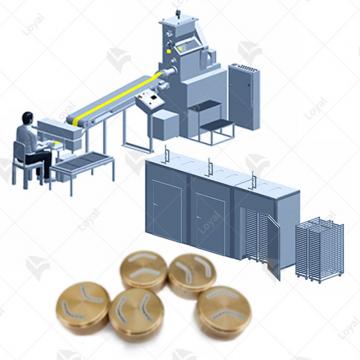 Combined Automatic Pasta Sheeter
Combined Automatic Pasta Sheeter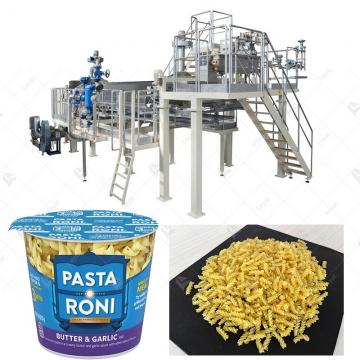 Instant Pasta Production Line
Instant Pasta Production Line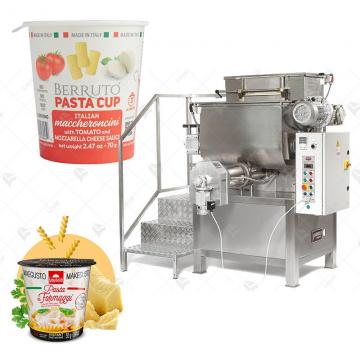 INSTANT PASTA CUP PRODUCTION LINE
INSTANT PASTA CUP PRODUCTION LINE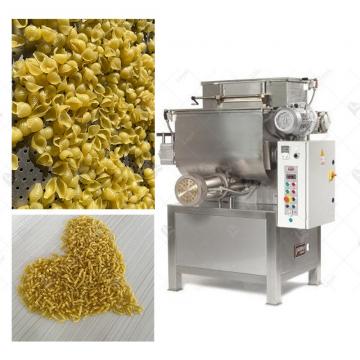 PRECOOKED PASTA PRODUCTION LINE
PRECOOKED PASTA PRODUCTION LINE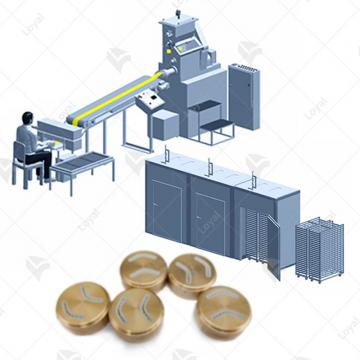 Dry Pasta Production Line
Dry Pasta Production Line